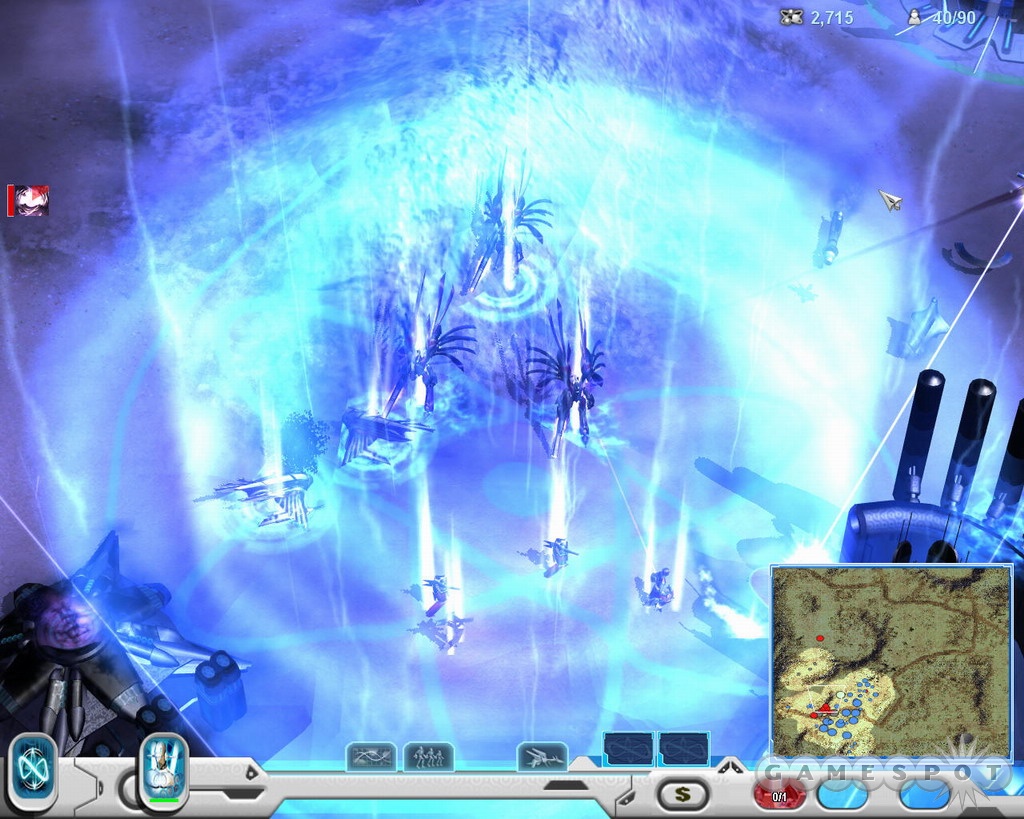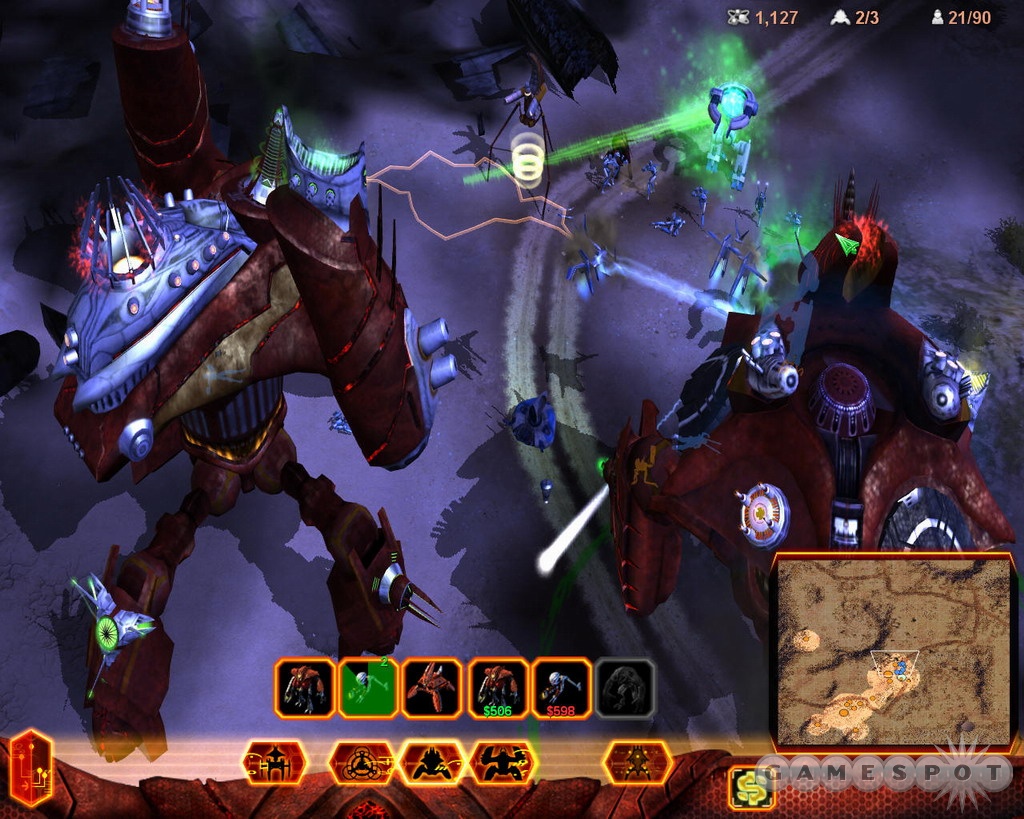Universe at War: Earth Assault Updated Hands-On - Multiplayer
This real-time strategy game will let you lead three entirely distinct alien factions in battle.
Sega and Petroglyph's upcoming real-time strategy game Universe at War: Earth Assault is an alien invasion tale where the aliens take it to humanity. In fact, you won't play as the plucky human defenders in this game. Instead, you'll be able to lead three different alien factions as they wage war against one another on terran battlefields. The goal in many RTS games is to create distinct factions that play uniquely from one another, and judging from the multiplayer beta that we've been checking out, Petroglyph has managed to achieve this goal. Universe at War has some truly alien races that play quite differently from anything we've seen in a strategy game.

The story goes a bit like this: In the year 2012, the Earth is invaded by the Hierarchy, a ruthless alien faction that is built around giant "walkers," 100-foot-tall or higher war machines. The Hierarchy are pursued by the Novus, a sentient machine race out to destroy the Hierarchy at all costs. The third alien faction is the Masari, which has actually been slumbering secretly deep below the Earth for thousands of years. The arrival of the Hierarchy, their ancient enemy, wakens the Masari, and they lash out at both factions.
It naturally goes that each faction has its own philosophy and gameplay style. For example, the Novus is essentially a computer race and built around the idea of networks. Novus structures are linked to one another, as indicated by a network of beams. Certain Novus units can disassemble themselves and "ride" the beams anywhere else around the network, sort of like the transporter in Star Trek. With certain research upgrades, bigger Novus units can also ride the network. This lets you rapidly shift forces around and allows you to conduct hit-and-run raids. This also plays a large role in resource collection. The Novus rely on energy and raw materials. Energy is generated by building special power structures, and raw materials are reclaimed by building recycling centers that send out drones to recover matter from the environment. That means that you can build the recycling buildings in the back of your base, which is where they're safe, while the drones ride the network out into the edges of the map to recover material. As a result, you need to constantly push your network out if you're a Novus player.
In comparison, the Masari have a radically different game style. The Masari only have one resource--matter--and it can be generated by building matter engines that automatically generate the stuff over time. This lets them build a variety of powerful units and structures. While the Novus rely more on sheer mass and large numbers of units, the Masari utilize a smaller number of powerful units and heroes. More interestingly, Masari units and buildings can alternate between "light" and "dark" modes, which basically give them dual capabilities. Generally, in light mode, Masari units have increased line of sight and weapon ranges, along with the ability to do burning damage. In dark mode, Masari air units become grounded, but all units have increased speed. Meanwhile, weapon hits won't do burning damage but will slow enemies. It's also nice that the Masari feel like the more "conventional" faction because you can build a powerful base behind a wall of defenses but don't need to spread out your structures as you would with the Novus.
If the Novus are about decentralization while the Masari are about concentration and versatility, the Hierarchy are basically a force of nature thanks to their huge, lumbering walkers. These are mobile fortresses, albeit slow ones. There are two types of gigantic walker. The habitat walker can churn out infantry units, while the assembly walker can produce vehicles. This is on top of their ability to be decked out with various weapons and equipment, though it's a balancing act. You can make a dedicated production walker by specializing in hard points that accelerate build speed and reduce the amount of raw materials needed for each unit. Or you can make heavily armed walkers that can stomp their way across the battlefield. The Hierarchy rely only on raw materials, which are scavenged from the environment by reaper drones. You need at least four or five drones to generate a stream of raw materials sufficient enough to constantly churn out units. These drones could be a potential weakness for the Hierarchy, since they're a lot easier for enemies to knock out than walkers.

Because Universe at War follows the standard RTS formula of gathering resources, building bases, and then raising armies, it wasn't too surprising that we encountered early game "rushes," where one player charges another very early in the game with a handful of units. This can have a devastating effect if caught unprepared because a budding economy can be crippled with an effective rush. To defend against it, you have to build a small group of defenders and, if they're available, defensive structures, such as turrets. That's a bit of a problem for the Novus because their deflection towers don't become available until after you build the pricy science center. Another solution is to make a gentleman's agreement with the other player to not rush each other so that you can build up bases and armies for a big throw down, which is something that we experienced as well.
Trying to figure out the nuances of these factions is going to take a while, especially considering the nature of the technology tree. The tech tree has three branches, consisting of four tech levels each. However, you can only research a maximum of six technologies in a single game, which means you have to decide what you want. You could max out a single branch and research half of another. Or you could spread the research out and unlock a little from each branch. This seems like a challenging game to balance, so the designers at Petroglyph have their work cut out for them. Universe at War will ship next month.
Got a news tip or want to contact us directly? Email news@gamespot.com
Join the conversation